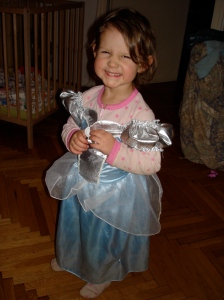In honor of Pi day I thought I would pull out a post from the
unfinished archives. I wrote a few posts around the beginning of this
year, and never published them since they were meant to be part of a
series, and I don’t really have time to commit to finishing it. So
here is the first largely untouched from its original state.
Intro
Sometimes I can’t get an idea out of my head until I act on it.
Sometimes it’s enough to simply add it to my ever growing list of
things that I will do “someday”. Lately that idea has been making my
Master’s and Ph.D. theses accessible to the layperson—and adding it
to the list wasn’t enough. Perhaps starting to work on it will allow
me to get it out of my mind and actually work on my
research. [Editor’s note: It did.] That means I may not finish this
series of posts—particularly if nobody else cares.
In my mind’s eye, for some reason my audience is usually my 10 year
old sister. Of course, that means that I’ll have to keep things
simple. I will also gloss over technical details and try to avoid
mathematical jargon and notation unless it’s useful, in which case I
will of course explain it. I am probably incapable of making it as
entertaining as Vi Hart makes doodling, but hopefully it will be
understandable and not too boring. At the very least I’ll try to keep
it short.
Numbers
One purpose of abstract algebra (the general area of my theses) is to
generalize numbers and see what sorts of computation are possible. We
want to see what can happen if we require that only certain properties
of numbers are preserved. To begin, let’s recall some different types
of numbers and different properties that we think are important.
Below is a list of different types of numbers with their mathematical
names, and a more common name or description in parentheses. I will
try to use the non-mathematical name throughout the rest of this
series, so if I forget you can point it out in the comments.
- Natural numbers (counting numbers)
(This often
includesdepending on the context.)
- Integers (whole numbers)
- Rational numbers (fractions)
- Real numbers (all the other non-imaginary numbers)
- Complex numbers (real + imaginary)
Don’t worry if you haven’t heard of all of these, we won’t be needing
much more than integers and fractions. There are also different types
of numbers that I haven’t mentioned e.g. algebraic integers, but since
they are likely unfamiliar they would just distract us from the task
at hand.
One thing to know is that each set of numbers is larger than the one
above it. This means that the earlier ones are simpler, but the later
ones “solve more problems”. A few examples of what I mean are in
order.
Suppose that I ask how many sheep you have on your farm. You can
answer with a counting number (assuming that we include 0). But
suppose that I asked how many more sheep you had this year than last
year. You might to able to answer with a counting number, but what if
you have fewer sheep this year? In that case you will need a
negative number. In either case the answer is an integer.
Now suppose that you wished to divide your sheep amongst your children
when you die. If you are lucky (or have only 1 child) you can divide
them evenly, but in general you will have to use a fraction. (Note
that mathematicians prefer “improper fractions” to “mixed numbers”.)
Now imagine that you wish to send your sheep into space, and so you
need to solve for
to determine how large of a cannon
you must buy. (You can read more details about where this equation comes from.) Unless you are exceedingly lucky, you will not be able
to answer this using a fraction, you’ll need what we are called real
numbers (technically you only need square roots for this particular
equation). It’s not important for us to know much about real numbers
at this point, but suffice it to say that there are enough to “fill
in” the number line so that there are no gaps.
To finish off our introduction to the numbers we will take advantage
of my new invention: the OTTRAW (Ovine Transfer Through RAdio Waves)
device. The OTTRAW divides the sheep into little quantum sheep,
converts them to electrical signals and beams them via radio waves to
a receiver where they are converted back into regular sheep. Quantum
mechanics, electrical circuits and some formulations of relativity all
use imaginary numbers. Don’t worry, I won’t touch on those applications here.
A much simpler, though less motivated example is as the solution to
the equation .
The important thing to notice is that, as man’s uses for numbers have
become more complex, so have the numbers he’s forced to use. This
naturally leads mathematicians to wonder what other sorts of “numbers”
might be out there waiting to be discovered/invented which would allow
us to solve even more problems.
Problems
The problems are not intended to be difficult and so should be
considered mandatory, though of course I can’t enforce it.
- What useful problems can you solve without negative numbers?
without fractions? - If you didn’t have negative numbers how would you solve problems
involving a number of sheep that fluctuates from year to year? In
what ways is this different than negative numbers? In what ways is
it the same? - What caused the discovery/creation of negative numbers? Where
were they discovered? fractions? - Where and when was zero created/discovered? Does this surprise
you in light of the previous answer? - What other systems have existed for writing numbers? How are they
the same, and how are they different from our modern system? - How many sheep do you have on your farm?

